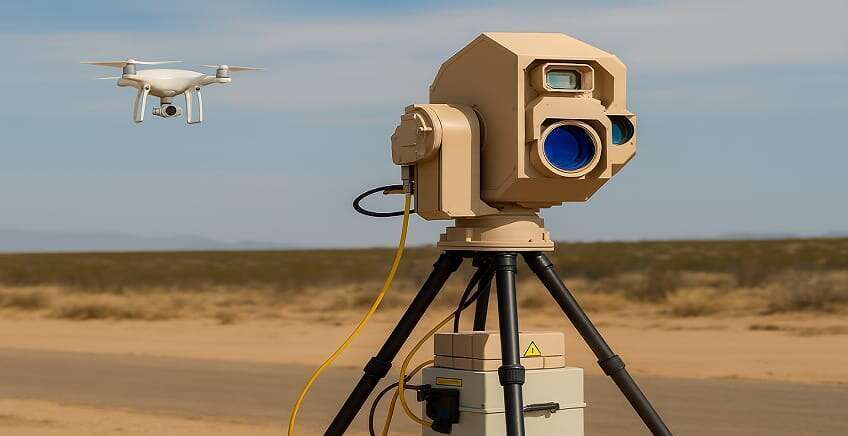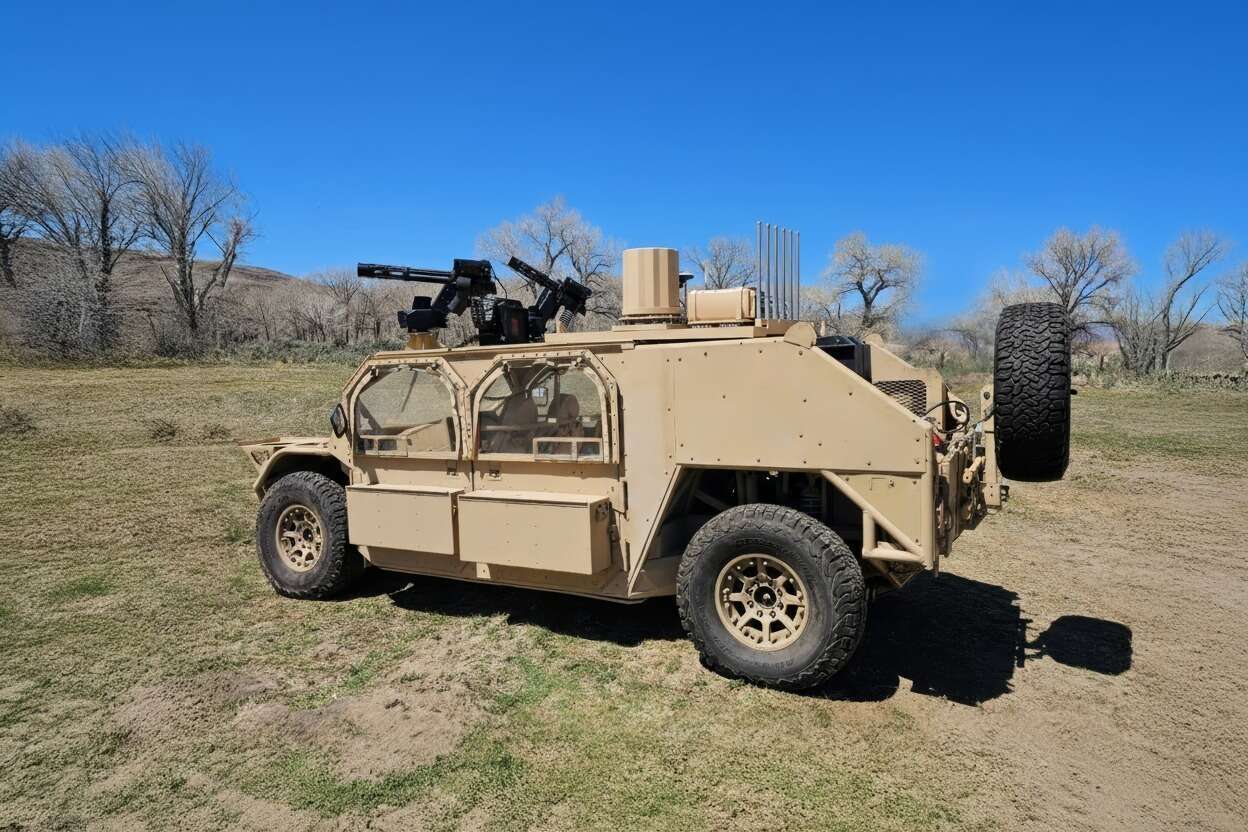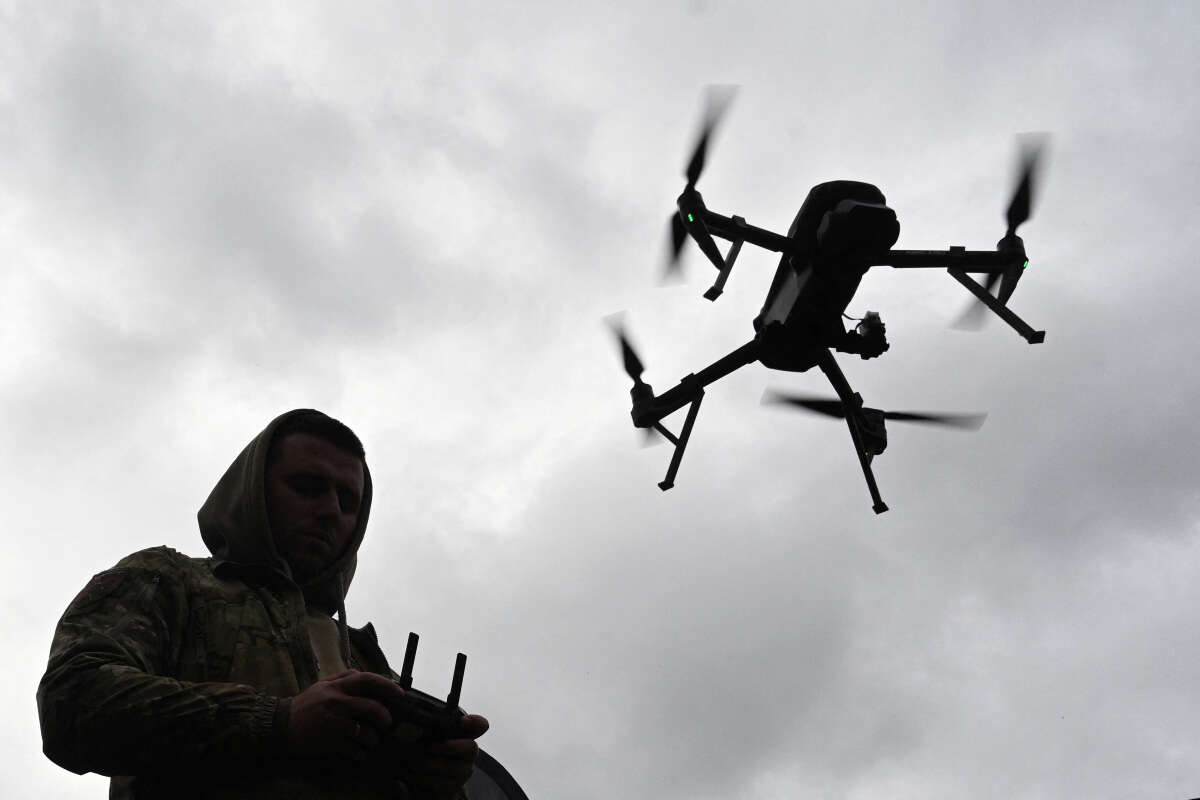Over the past decade, drones have transformed from a beloved photography accessory into an inexpensive, accessible, and lethal attack tool. They hover low, silently, carrying cameras, explosives, or jamming equipment, and can cause devastating damage to adversaries.
The battles in Ukraine and Russia, alongside Israel’s multi-arena warfare, have underscored the pivotal role of drones and unmanned aerial vehicles on the battlefield, sparking a surge of demand in the defense industry for anti-drone solutions.
Numerous companies produce anti-drone systems that detect and intercept drones using diverse techniques, including communication and GPS jamming, RF detection, video processing, and the integration of optical sensors and radars. Yet, each time a response to the threat is created, a new generation of drones emerges that circumvents it. This is an ongoing cat-and-mouse game in which what worked yesterday may not apply today.
 Skylock Skydefender System (Photo: Skylock)
Skylock Skydefender System (Photo: Skylock)
At first, drones were controlled through a fixed frequency and could be intercepted relatively easily via frequency jamming. Very rapidly, drones adopted “frequency hopping” techniques, enabling them to evade jamming systems. In response, defense systems were compelled to develop smarter scanners powered by machine learning.
When drones began relying on GPS, satellite-signal spoofing methods were developed, causing them to lose orientation. Later, drones appeared that navigate using internal sensors and computer vision, technologies that render them resistant to radio jamming. Then arrived the swarms, posing the quantitative challenge of intercepting dozens of targets at once. Each time defense closes a gap, offense generates a new way to circumvent it, and this occurs at a dizzying rate. Companies working in this field cannot afford to become complacent. They must consistently update, develop, and tailor solutions at the pace of the threat.
 Skylock Skydefender System (Photo: Skylock)
Skylock Skydefender System (Photo: Skylock)
“The drone threat never stops growing and developing, literally day by day. This requires us to always be one step ahead, providing solutions not only to current threats but also to those that will emerge in the future,” said Baruch Dillion, CEO of Israeli company Autonomous Guard, which develops drone detection and interception systems.
Dillion spoke to Israel Hayom precisely as his company was demonstrating the interception system for representatives of a European nation. “The Europeans are in total hysteria. They understand this is real. They’re accelerating long-term programs and, in the short term, building point-defense plans. We’re participating in several such projects,” he added.
Transitions to aerial symmetry
Skylock, a subsidiary of Autonomous Guard, presents a multi-layered defense philosophy. The detection layer relies on a blend of RF, optical, acoustic, and radar capabilities, along with information fusion, to identify as many types of aerial threats as possible under varying conditions.
Following identification, the interception operation relies on an array of electronic warfare and jamming capabilities, as well as kinetic measures. Now, a laser is also joining the arsenal of interception capabilities.
Skylock possesses two types of lasers: one for a range of hundreds of meters and another for up to 1.5 kilometers (0.9 miles). “Laser is a fantastic solution,” Dillion said, “but it’s point-based and the range is limited. It’s excellent when drones move visually and don’t rely on an external link, but the inability to address a swarm of drones is a real limitation. When ten targets arrive simultaneously, you need something else.”
Here is where the next vision comes into play: drone-versus-drone. Rather than launching expensive interceptors from ground or air sources, the concept is to achieve a symmetrical response in quantitative terms: launching many relatively inexpensive interceptor drones against a drone attack.
“To deal with swarms, you must respond with quantity,” Dillion explained. “An Iron Dome interceptor costs a lot. An interceptor drone costs a few thousand dollars. If I detect five drones, I launch five. If I detect 50, I launch 50.”
Skylock is not the first company trying to embrace a drone-versus-drone interception approach, but the practical execution is more intricate than it sounds. The primary problem is the “last mile” – roughly the final 100 meters where the target maneuvers close to the ground and terrain conditions are especially challenging. “Quite a few companies are claiming to offer such a solution; it may work well in controlled demonstrations, but not in operational conditions,” Dillion said. “In the system we’re developing, the interceptor drone locks onto the target at close range using optical sensing, and from that point it locks on and crashes into the target. This is the ultimate solution.”
 Baruch Dillion, CEO of Israeli company Skylock (Photo: Skylock)
Baruch Dillion, CEO of Israeli company Skylock (Photo: Skylock)
Europe fortifies
In Europe, the war in Ukraine has accelerated a deep process of change: countries are moving from point defense of critical facilities – bases, airports, power stations – to regional defense, with the long-term goal of establishing a unified spatial network that synchronizes all monitoring and detection areas. “In the end, everyone will understand that one monitoring network and full information synchronization are necessary. But until that happens, point solutions are needed now,” Dillion said.
Skylock belongs to parent company Autonomous Guard, which also owns BeeSense, a company creating ground, aerial, and maritime surveillance systems. The connection between the two permits Autonomous Guard to present a multi-layered defense envelope, from information collection to interception. “The synergy between BeeSense and Skylock enables providing a complete defense solution – ground, aerial, maritime – from one company, because the systems are integrated,” Dillion explained. “For example, BeeSense detection systems are integrated as detection means for drones in Skylock’s system.” According to Dillion, the operational benefit of connecting the two companies is the capability to adjust defense to the required scale: from a single facility to an entire border network. “Our systems can interface even for the defense of a long border.”
According to Dillion, the challenge today is not only identifying the threat but also dealing with the volume of information. “It’s possible that even the amount of information that preceded October 7 was an inhibiting factor in prevention. Information fusion and cross-referencing between systems allow the user to distill what they really need to make the right decision.”

